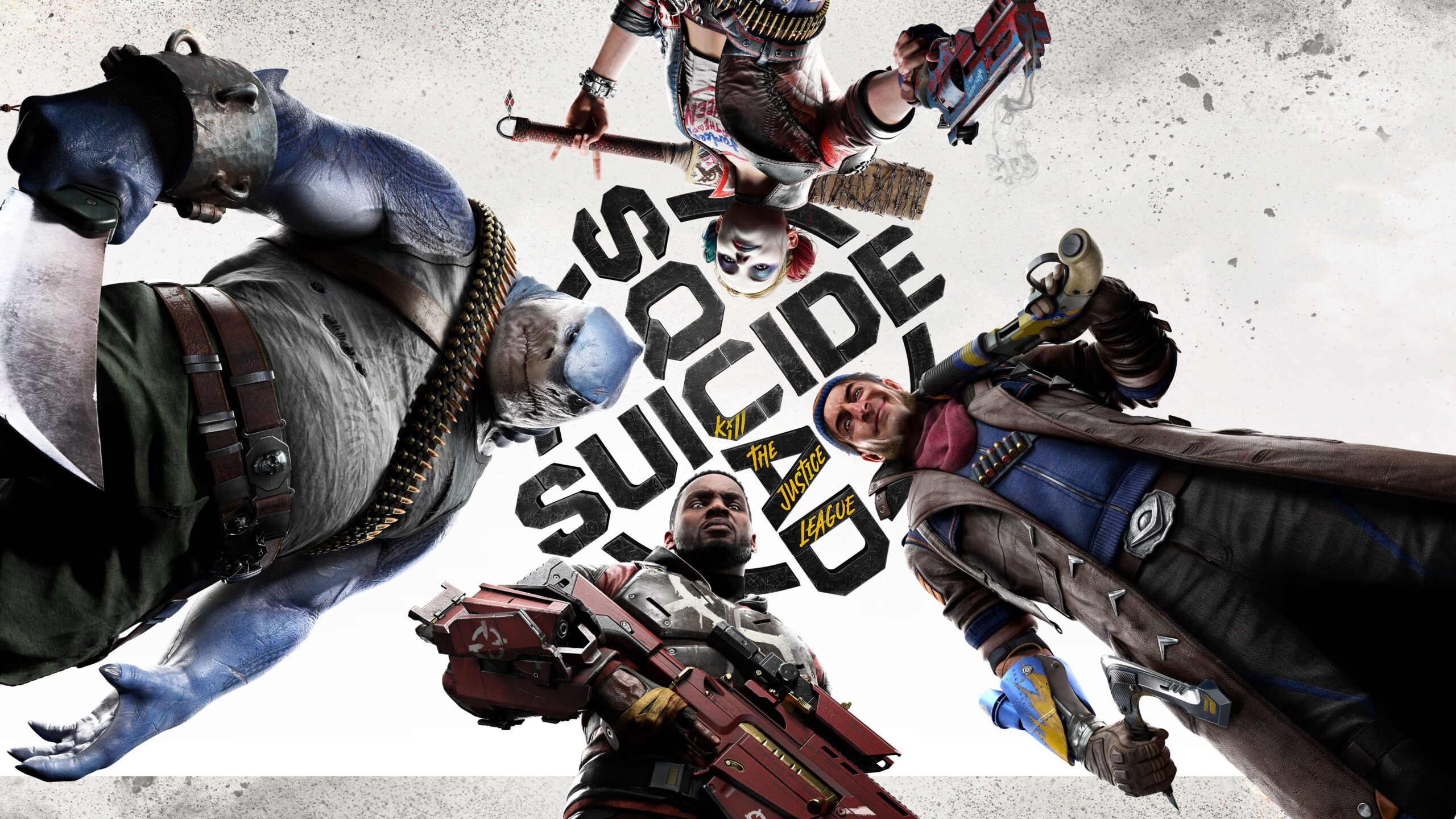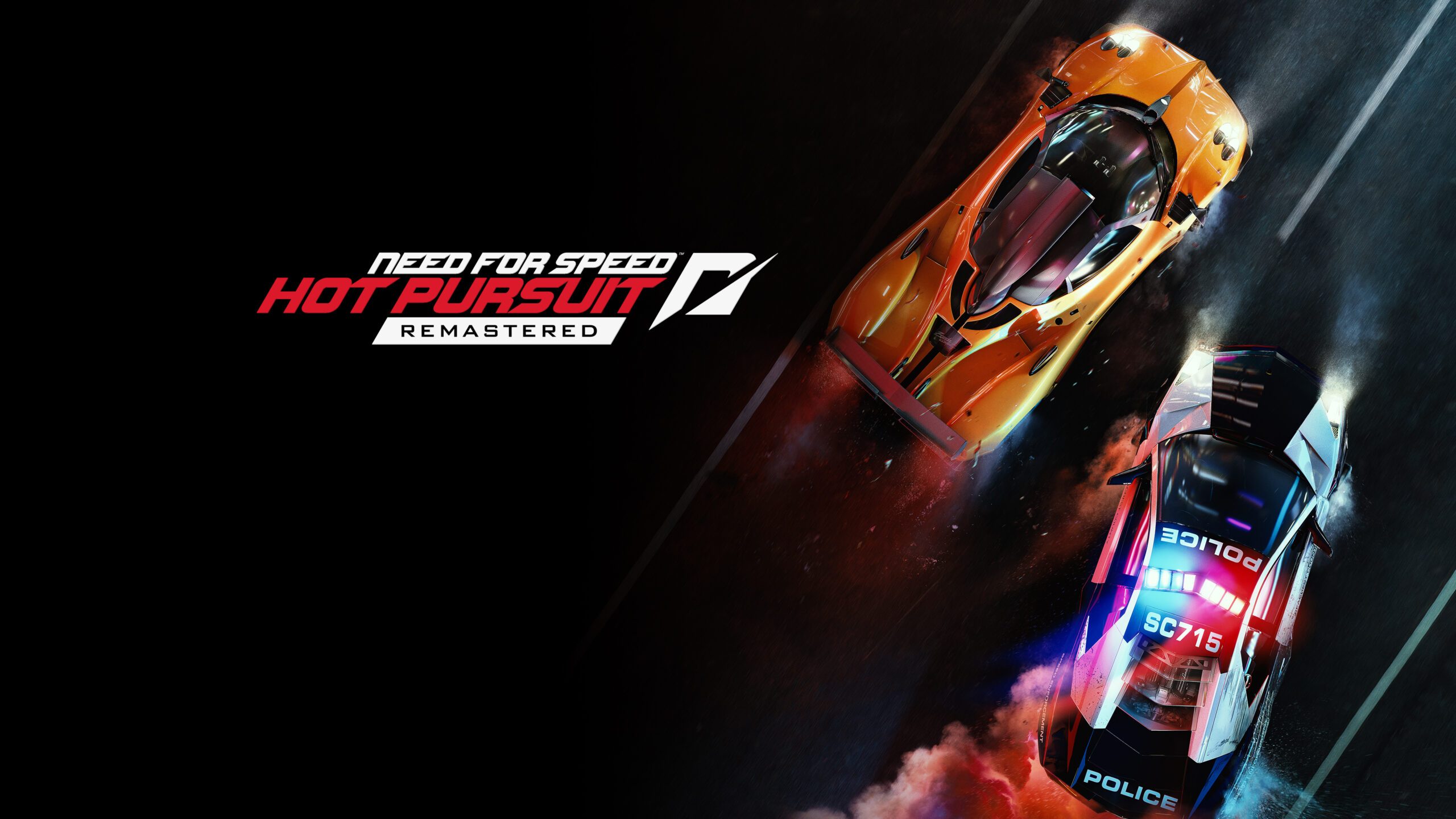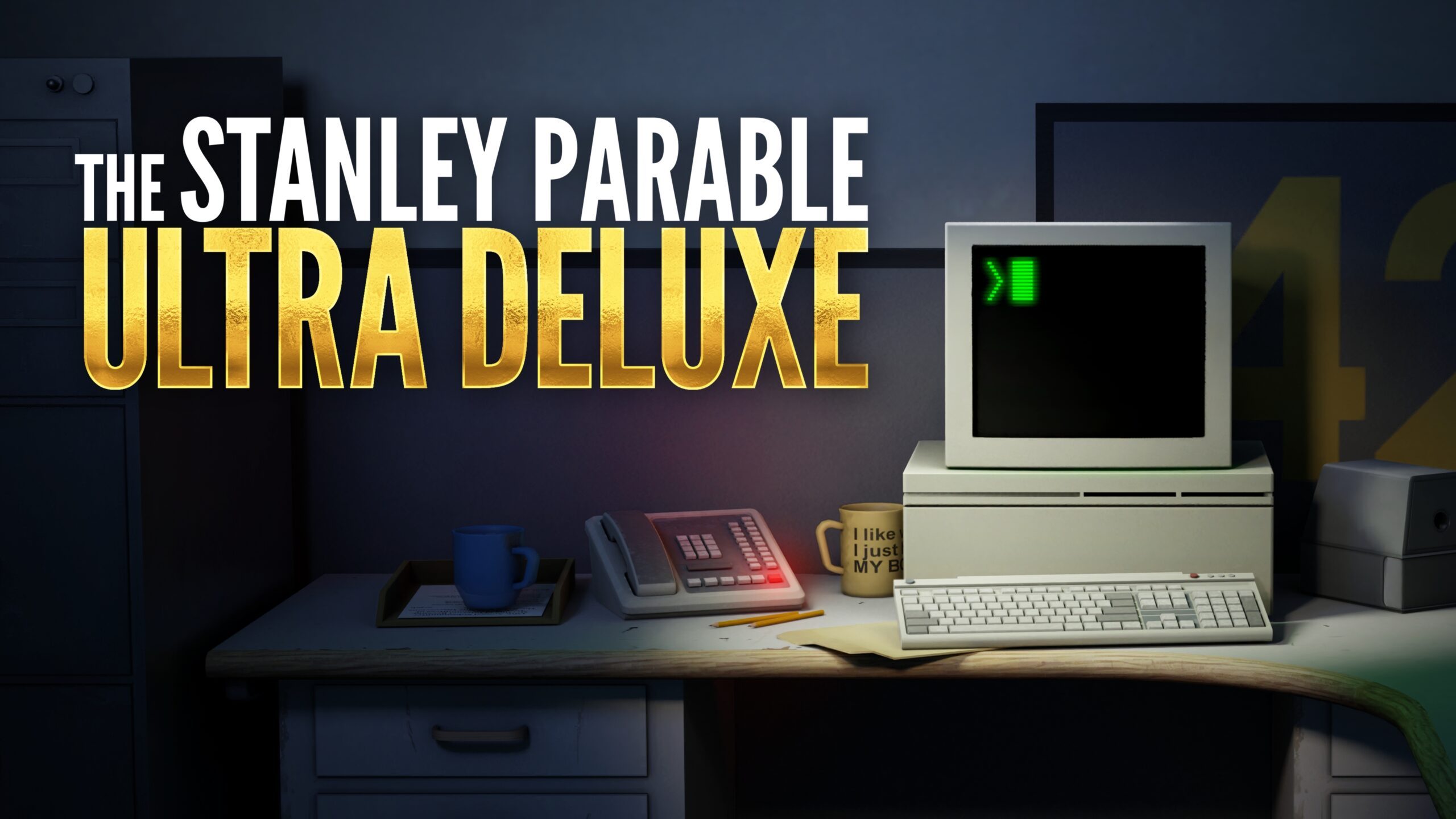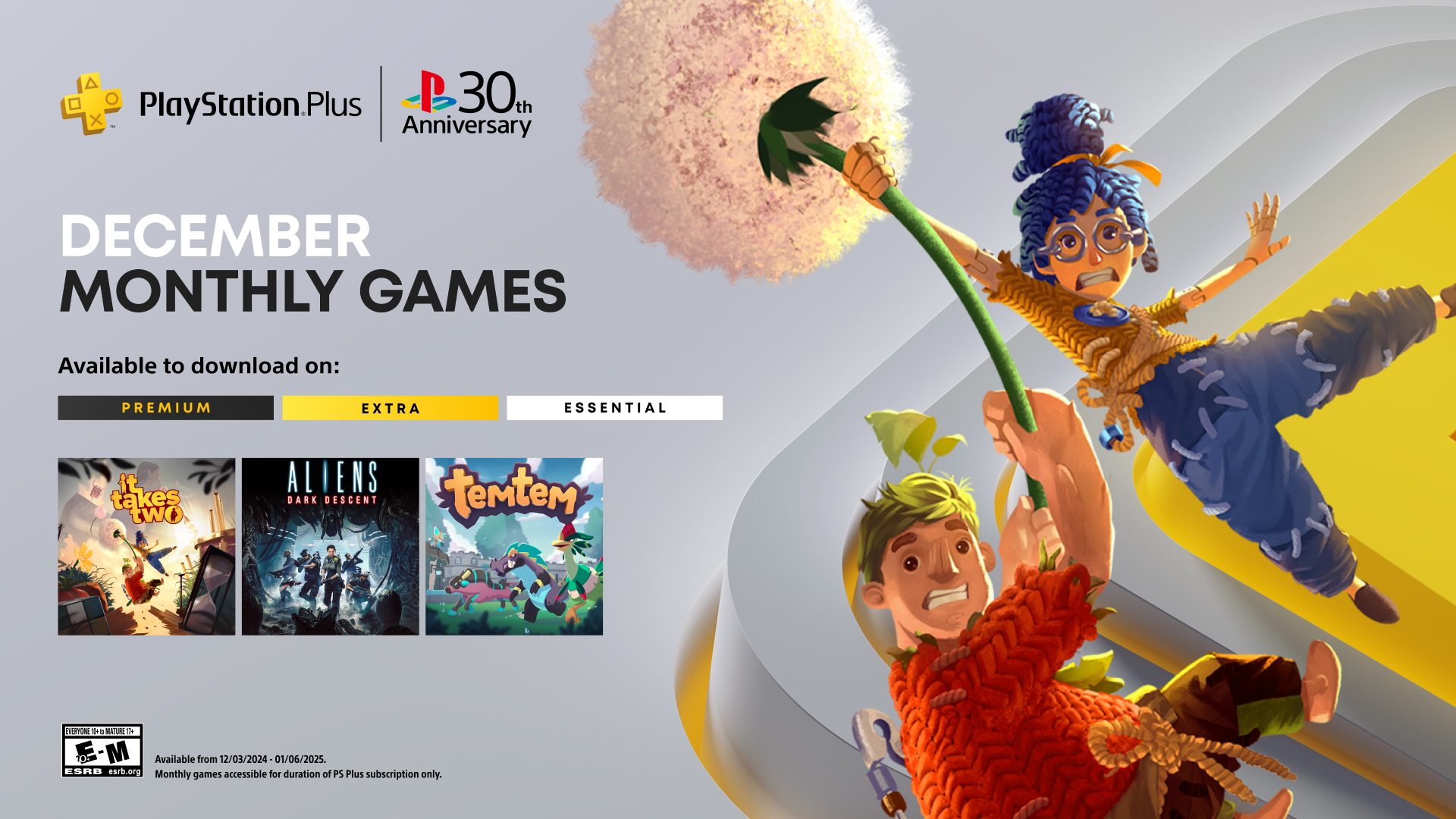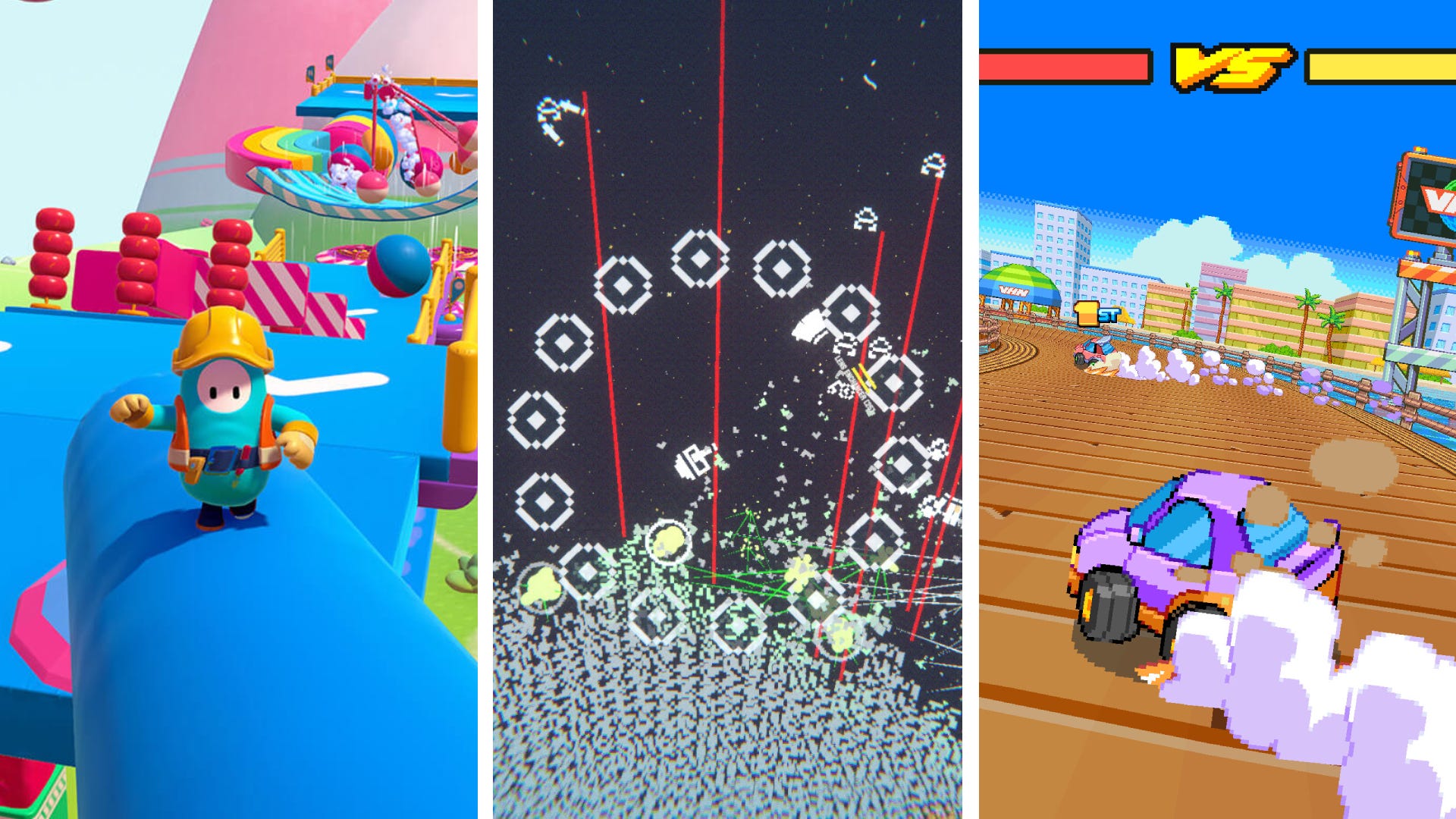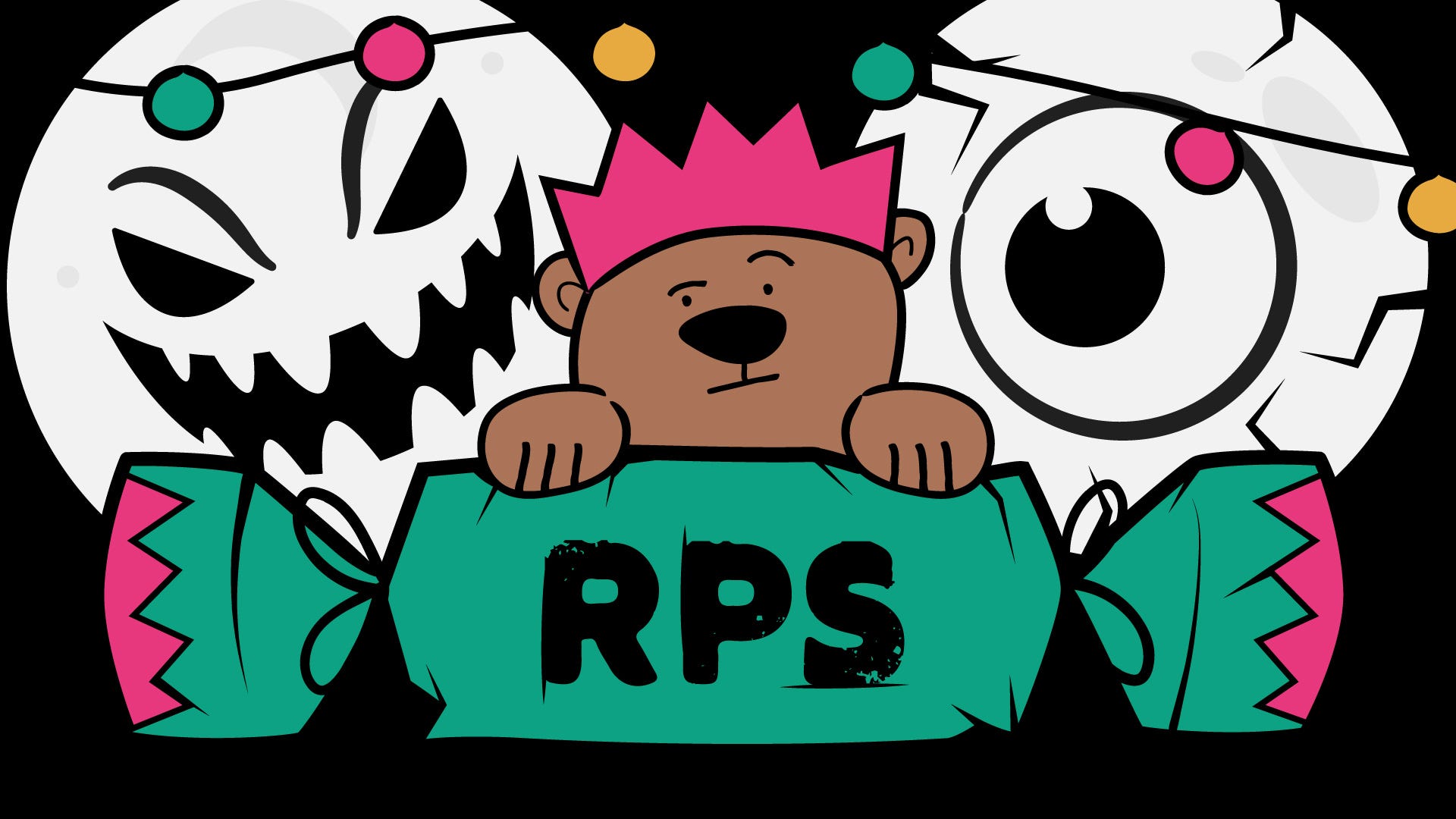Happy new year! Welcome to 2025, and congratulations for living through yet another complete rotation around the giant firey gas ball we call the sun. The start of a new year is as good a time as any to take a look at what games are currently on the horizon, so here are the biggest game releases of 2025 that we know about right now!
January 2025
On January 17, Tecmo Koei’s flagship musou series returns with Dynasty Warriors: Origins, its first full-fledged entry since 2018. It will, of course, take full advantage of current gen hardware to flood your screen with enemies that you can plow through while yelling the titular battlecry, “DIE, NASTY WARRIORS!” It’ll be available on PS5, Xbox Series consoles, and PC.
If you prefer to make warriors die in nasty ways from really far away, on January 30 Sniper Elite: Resistance continues the long-running and long-range gratuitous-Nazi-castration-simulator series. This latest installment doesn’t seem to be shaking up the formula too much, but it’s hard to complain about that when the formula involves shooting the private parts off of fascists. Did I mention you can shoot Nazis in the junk? Because you can. That’s on all the Xboxes and PlayStations, plus PC.
February 2025
Is this the real life? Is this just fantasy? Well, none of the above, but it is technically a bohemian rhapsody – Kingdom Come: Deliverance 2 picks up where the first sprawling historical RPG left off, continuing the adventures of Henry of Skalitz, a poor boy with no need for sympathy. And while KCD2’s immersive and historically grounded simulation of 14th century Bohemia is by no means easy come or easy go, the deep role-playing mechanics and massive open-world means you can take Henry any way the wind blows. Doesn’t really matter to meeeeeee. That’s on current gen consoles and PC, launching February 11.
If you like simulated history on a much larger scale and even larger timeframe, Sid Meier’s Civilization 7 drops that same day. When a game franchise has had 7 installments over three decades, it really shouldn’t need much in the way of introduction, but in a nutshell: you’re in charge of seeing a society and guiding its progress through history by Exploring, Expanding, Exploiting, and a 4th X word as needed, which unsurprisingly, can get a bit complicated. That’s out for basically everything, including Linux, but excluding mobile – but that’ll probably come later.
On February 14, Assassin’s Creed Shadows sends Ubisoft’s flagship open-world series into the much-requested setting of feudal Japan. If you can’t decide if you’d rather be a ninja or a Samurai, we have great news: this one lets you do both, thanks to its dual protagonists. That’s on current gen and PC.
If you’re feeling lonesome on Valentine’s day, there’s also Date Everything!, a sandbox dating simulator where you may in fact be able to date an actual sandbox – and if not, there’s 100 other anthropomorphized inanimate objects with which you can become romantically involved, from the windows to the walls – or the floor, anyway – and they’re all fully voice acted. That’s on PS5, Xbox series consoles, Switch, and PC.
On February 18, Obsidian’s Avowed hits Xbox series consoles and PC. This is set in the same fantasy universe as the studio’s isometric Pillars of Eternity games, but this time offers a whole new point of view thanks to its first-person perspective and realtime action combat. It may look like Skyrim, but don’t expect an epic timesink – the devs have said it’s more comparable to their previous sci-fi RPG, The Outer Worlds (which takes around 40 hours to do the main quest and sides), which is great news for anyone who sucks at finishing games.
Speaking of timesinks, if you think it’s time to sink some ships and terrorize the high seas, well you’re in luck because Like a Dragon: Pirate Yakuza in Hawaii is… well, I feel like the title really covers its bases there. This’ll see Goro Majima, the fan-favorite foil and frenemy to the series’ usual protagonists, taking the wheel – somewhat literally – after he gets amnesia and decides to explore a new career as a pirate. Classic Majima. That’s on the Xboxes, PlayStations and PC on February 21.
Pirate Yakuza actually moved its release date up a week to get the hell out of the way of one of the biggest games of the year, Monster Hunter Wilds, which comes to Xbox Series, PS5 and PC on February 28. Again, it’s one of those series that requires little introduction, especially after how many new players got hooked on Monster Hunter World last gen. With Wilds, Capcom is aiming to refine and improve the core experience in a way that satisfies longtime fans and newcomers alike, but also introduce new features that take advantage of current hardware to keep things interesting. Oh yeah, and it also needs to be accessible enough to attract more new players – so, if you’re wondering why this game has taken so long… that might have something to do with it.
March 2025
On March 6, it’s time to buddy up for another co-op adventure from Hazelight, the studio behind It Takes Two and A Way Out. This time it’s Split Fiction, which sees a sci fi and fantasy author getting stuck in virtual reality and undergoing a bunch of bizarre adventures, including but not limited to getting turned into pigs who are subsequently turned into hot dogs and cooked on the grill – though the hot dogs are still playable. Best of all, buying one copy lets two people play online together. That’s on PC and current gen consoles.
On March 25, you can experience the upper-middle-class corner of upper-Middle-earth with Tales of the Shire, a cozy life sim that focuses entirely on ordinary hobbit life. You know, for regular hobbits who just like to garden and smoke pipes and drink brandy and have petty rivalries over trivial neighborhood bullshit, not going on long hikes to throw jewelry into volcanos. Honestly, sounds lovely. Be a shame if this Shire were to be ruthlessly scoured by ruffians in the thrall of Saruman. Anyway, that’s on PS5, Xbox series consoles, Switch, and PC.
If you’d prefer to explore a version of the Shire-like pastoral English countryside that’s been doused in radioactive particles, there’s Atomfall, which as you’ve hopefully put together is taking some cues from Fallout – though as this one leans a bit more into survival than role-playing, I’d say the Stalker influence is also pretty strong. Plus, this is also showing an alternate future in which a major real nuclear disaster went a whole lot worse. That’s coming to everything but Switch on March 27.
To me, DNF has always been short for “Did Not Finish” or “Duke Nukem Forever,” (which they probably shouldn’t have finished.) But to a few million people, it’s shorthand for Dungeon & Fighter, the multimedia universe stemming from the 2005 South Korean multiplayer beat-em-up that was released stateside as Dungeon Fighter Online. In any case, that universe gets a little bigger with the single-player action RPG The First Berserker: Khazan, which hits the Xboxes, PlayStations and PC on March 27 as well.
On March 28, the potential Sims-killer Inzoi hits PC, another South Korean joint which is hands down one of the prettiest video games I’ve ever seen. If this one delivers, I could very easily see it being one of the biggest games of the year. Something tells me that after 11 years, 12 game packs, and 17 expansions for The Sims 4, Sims fans might be in the market for something new and different. And there are a lot of Sims fans out there. That’s on PC at launch, with current gen console versions in the works for later.
April 2025
On April 24, Fatal Fury gets its first new game this century with Fatal Fury: City of the Wolves. And while Terry Bogard, Mai Shirunai and company have kept busy with appearances in other fighting game series like King of Fighters, Street Fighter, DOA, Tekken and Super Smash Bros, this’ll be the first mainline Fatal Fury since 1999’s Mark of the Wolves. Hopefully it’s worth the wait – that’s on both PlayStations, Xbox Series, and PC.
As of writing this article, those are all the major games that have official release dates. But that’s not every game slated for 2025 – there’s plenty more that we’re expecting over the coming year.
Nintendo and Switch 2
By April, we’ll almost definitely know when Nintendo’s next console will be released, but as of right now we don’t even know what it’s officially called. Nintendo has announced that details will be revealed sometime before the end of March 2025, and based on some leaked product listings for third-party accessories, there’s some speculation that it’s targeting a summer release window. Again, this is completely unconfirmed at this point, but it makes sense. The original Switch was revealed in October 2016 and went on sale the following March, and the organic buzz generated by gamers and early adopters made it a must-have item by the time the holidays rolled around.
Whatever this new thing is called, it’ll launch with at least a few games. The original Switch had about ten games available on day one, which sounds underwhelming until you remember one of them was The Legend of Zelda: Breath of the Wild. Another dozen or so games were released over the three month “launch window” following the Switch’s release. Bear in mind, a lot of people were skeptical of the Switch at the time of its launch, including publishers who’d been burned by the Wii U. The Wii had been such a hit that there was initially a ton of support for its successor, and the Wii U’s launch lineup was almost three times the size of what was out for the Switch on day one. Considering the Switch has outsold the original Wii by almost 50 million units, and is currently the third best-selling console of all time, it’s safe to assume that a LOT of publishers will want to get in on the ground floor for whatever’s next – so I have a hunch there’ll be a lot of Switch 2 games.
There are a couple bigger Nintendo games we’re expecting to drop this year. Metroid Prime 4: Beyond was basically just a logo for the better part of a decade, and presumably it’ll actually be a video game at some point in the near future, which is exciting. That’s coming to Switch, but I wouldn’t be surprised if that was one of the big flagship launch titles for the new console, as well – and even if it’s not, the new hardware is supposedly backwards compatible, so I’m sure plenty of people will be playing it on there either way.
Pokémon Legends: Z-A is slated for 2025, which is another entry in the open-world action RPG side-series – Pokémon Legends Arceus took some big swings, but it also made the Switch show its age in some places, so hopefully that can benefit from more powerful hardware – or at the very least, improve on the groundwork laid by Arceus.
Grand Theft Auto 6
A rising tide raises all ships, and new Nintendo hardware will definitely help keep the games industry afloat a bit, but the other big 2025 release that’s sure to make some waves is Grand Theft Auto 6. I don’t need to tell you how much excitement there is for this game. GTA 5 is the second best-selling game of all time, and after a twelve year, three console generation wait, people really, really want to see what Rockstar does next with its signature series. I’m calling it right now: it’ll probably be the best-selling game of the decade, and almost definitely the best-selling game of 2025 – assuming it does in fact come out in 2025. It’s worth noting that practically every major Rockstar release, GTA and otherwise, has been hit by a delay or two. So, fingers crossed we get GTA 6 on time, but also, ya know, expect disappointment and you’ll never be disappointed.
TBC 2025
Now it’s time for the big huge pile of games we’re expecting at some point in 2025, but which don’t have specific release dates yet. This makes it really hard to figure out what order to put them in, and also chances are by the time you’re reading this list a few will have been given release dates or maybe even delayed a year. So just keep in mind this is all subject to change in some way and please don’t be mad at me.
Hideo Kojima fans are eating good in 2025, or at the very least, eating snakes. Metal Gear Solid Delta: Snake Eater, the full modern remake of the fan-favorite third entry in the tactical espionage action series, will be coming to current gen consoles and PC. While Hideo Kojima has had no involvement with it (aside from directing the original) it seems like a lot of care is being taken on Konami’s part to not fuck it up. This showed up in a PlayStation promo that dropped last January showcasing big 2024 releases, and a November 17 release date was briefly leaked by GameStop, but was apparently that was all inaccurate. Nontheless, it seems like we’ll be getting it sooner than later. That’ll be on PS5, Xbox Series consoles, and PC.
PlayStation Games 2025
Meanwhile, Kojima’s next big thing is Death Stranding 2: On the Beach, which drop anchor on PS5 at some point in 2025, and will presumably wash up on PC, Xbox, and maybe even Mac and iOS later on, if the first game’s rollout is anything to go on.
The other big PS5 exclusive we know about right now is Ghost of Yotei, Sucker Punch’s next open world Samurai game. While many games target fall release windows, Sony has the tendency to drop major first-party games earlier in the year. For instance, Ghost of Tsushima was a July release, The Last of Us Part 2 and Ratchet and Clank Rift Apart were both June releases, and God of War 2018 was an April game. Saying that, God of War Ragnarok came out in November, so go figure.
Xbox Games 2025
Sony’s been playing stuff annoyingly close to the chest, but we have a better idea of what Xbox has in the works. There’s Fable, which is dusting off the beloved fantasy RPG series from a few console generations back. This time Playground Games has been given the keys and taken the wheel, if you’ll pardon the expression. Playground is the studio behind the Forza Horizon series – as in, that’s literally all they’ve publicly done, so I’m dying to see their spin on an RPG. I don’t give a shit about racing or cars and can barely drive one in real life, but I somehow sunk 120 hours into Forza Horizon 5 – so if they can make me enjoy something I don’t care about that much, I’m dying to see how they handle an epic fantasy game with wizard stuff and fart jokes and large frogs. That’ll be on Xbox Series consoles and PC.
Another game that probably involves some other large swamp creatures and magic is South of Midnight, which is a southern gothic fantasy action-adventure from the studio behind We Happy Few. That’s hitting PC and Xbox Series consoles.
Hey you know what game looks hella sick? Doom: The Dark Ages. I want to specifically call out that gun that grinds up skulls and shoots them at stuff, because that is so metal it’s just hilarious. And there’s also a shield with sawblades on it, and you can ride a dragon – and Doom guy has a little fur coat? I just love what they’re doing over there at id Software, and each new iteration feels like a more evolved form of the shit I was angrily scribbling in the margins of my math homework in fifth grade. Obviously that’ll be coming to PC and Xbox Series consoles but it’s also going to be on PS5 as well.
Speaking of Xbox-published games coming to PS5, you can expect Indiana Jones and the Great Circle to finally make its way its way to the console with a circle button in the spring. And speaking of Xbox-published games based on Disney-owned intellectual properties, there’s also chance we’ll see Arkane’s Blade game at some point in 2025. That is admittedly a big if – game development is arguably an even slower and more difficult pursuit than ice skating uphill, so I wouldn’t be surprised if the daywalker doesn’t see the light of day until 2026.
Multiplatform Games 2025
And hey, Blade is not the only Marvel game in the works – there’s also Marvel 1943: Rise of Hydra, which is slated for 2025. This is from Skydance New Media, the studio being run by Amy Hennig, who you may know for her work on Uncharted, Legacy of Kain, or Michael Jordan Chaos in the Windy City. This game will see Captain America teaming up with the Black Panther during world war 2 – specifically, Azzuri, who’s the grandfather of T’Challa. This isn’t to be confused with the other Black Panther game being developed by Cliffhanger Games, which seems like it’s probably a lot further out.
A bunch of long-awaited sequels or otherwise new installments in established series are dropping in 2025. Borderlands 4 is the first numbered entry in Gearbox’s looter shooter since 2019, and hopefully a new game generates more interest than that movie adaptation did. That’s on new gen and PC. If you prefer grindrails to loot grinds, Skate 4 is finally expected to enter early access this year – though they actually dropped the number entirely. It’s just Skate now. It’s cleaner. Before you get too excited, thogh, it’s worth noting it’s going to be a free-to-play live service title published by EA, so adjust your expectations accordingly. Meanwhile, Crazy Taxi is getting a similar treatment, and Sega’s arcade/Dreamcast classic is being reinvented as an open world MMO. There have been some rumors it’ll drop in 2025. At least one of these games better have The Offspring on the soundtrack.
If you like sand, well, get excited because we got a couple literal sandboxes on the horizon. There’s Dune: Awakening, the survival RPG based in Frank Herbert’s spicy sci-fi universe – or rather, on the titular planet of Arakkis. Then, there’s Crimson Desert, the single player action game set in the universe of Black Desert Online. Based on all the trees and greenery, Crimson Desert doesn’t actually seem to take place in a desert, but maybe it’s more of a state of mind.
Either way, one game that’s set in the opposite of a desert is Subnautica 2, which will surface in early access in 2025. It’ll have been over a decade since the first game entered early access, and it’s attracted its share of admirers since then, so hopefully the sequel floats their boat.
If you prefer stacking the deck to swabbing it, there’s also Slay The Spire 2, the follow-up to the hit roguelike deckbuilder that debuted way back in 2017. If you’d rather slay some big scary monsters and whatnot, there’s also Hell is Us, which looks like a soulslike, but the jury’s out on whether or not it actually is. It is a third-person game with melee combat and exploration that’ll probably be a good diversion for Soulsborne fans waiting around for whatever arcane fuckery FromSoft is currently cooking up.
Hey would you believe I started writing this article before The Game Awards had aired? Because as it just so happens, the arcane fuckery FromSoft has been cooking up on is Elden Ring Nightreign, a standalone co-op multiplayer roguelike game due out relatively soon. Basically, it’s swapping the plodding grind of the main game for a more streamlined dash to gather runes and gear on a remixed and shuffled map of The Lands Between that gets even freakier when the sun goes down. Oh, and there’s also a rapidly shrinking circle of acid rain to contend with – or ring if you will. So, yes, it’s a little bit Fortnite – but also clearly something else entirely. As much as I love how FromSoft has gradually refined that core Soulsborne experience, this feels like a direct response to the creative ways players have been approaching their games – you know, doing speed runs with DDR mats, or beating the game without jumping or levelling up or whatever, or making mods where every enemy has been replaced by Malenia and stuff like that. Not sure if it’s something I will personally enjoy playing, but I’m dying to see what other people do with it. That’s coming to all the PlayStations, Xboxes and PC.
Bioshock fans have been waiting for a new installment even longer than GTA fans, and while it might not be an official entry in the series, Judas is very clearly a spiritual successor, and it’s being overseen by Ken Levine, the man who first took us to Rapture and Columbia. We’ll supposedly be seeing that in 2025 at some point – and of course, there’s also the possibility that 2K unveils an official Bioshock as well, which we’ve been hearing rumors about for a cool minute now.
Speaking of GTA, if you think Rockstar’s open world crime epic has too much twerking and Tiktok and you’d like your crime a bit more organized, there’s also Mafia: The Old Country – this looks to be expanding on the Olive Garden’s core philosophy of “When you’re here, you’re family” in a big turn-of-the-century Sicilian sandbox. Look for that on new gen and PC sometime this summer. Capisce?
If you like silly first-person RPGs in space with realtime combat and an Arabic numeral 2 in the title, The Outer Worlds 2 is exactly that, which is coming to Xbox series and PC. If you like serious isometric RPGs in fantasy realms with turn-based combat that faithfully recreates D&D’s 5th edition ruleset and a Roman numeral II in the title, Solasta II is also exactly that, which is coming to PC and probably consoles at a later date.
If you thought No Mans Sky had too much sky and not enough mans, well, Hello Games has been hard at work on their next ridiculously ambitious project, Light No Fire, which swaps the deep-space interplanetary exploration for a fantasy realm you can wander around. Oh, and this fantasy realm just so happens to be set on a planet that’s literally the size of Earth (as in, the big rock you’re currently living on), which is still a very large place. If you don’t believe me, go play Flight Simulator. Or just go outside, whichever. Light No Fire’s currently only listed for PC. Oh and hey, if this game isn’t everything you hope it is at launch, maybe give it a minute. If No Man’s Sky has proven anything, it’s that Hello Games will deliver in time, so don’t send death threats if there aren’t enough dragons of something.
If you’re light on zombie parkour games and dying for a new one, well, great news because Dying Light: The Beast is a standalone adventure set in Techland’s undead universe which is slated for a 2025 release as well.
If dying stuff makes you sad and you’d prefer a game with a whole bunch of immortals, you’re also in luck – is 33 Immortals enough? If three’s company, thirty three co-op players is a crowd, but that’s what’s going on in this chaotic multiplayer roguelike from the studio behind Spiritfarter and Jotun. That’ll be on Xbox and PC at some point.
You might have noticed that we haven’t really covered any remasters or re-releases, which was deliberate, but we’re making one exception for Lunar Remastered Collection, which dusts off and polishes up the Lunar: Silver Star Story Complete and Lunar 2: Eternal Blue, which originally released on the Sega Saturn almost 30 years ago. Why are we making this exception? Because Lunar is the all-time favorite game of Amanda Medina, who produced the video version of this article that you can see at the very top of the page. When you produce these videos, you can bend the rules and pick the games.
Long Awaited Games That Might Drop in 2025 if We’re Lucky
There are a handful of games that may come out someday, but which have been getting kicked down the road so many times that it’s sort of a boy who cried wolf situation. In one case, somewhat literally, with Telltale’s The Wolf Among Us 2. That was announced back in 2019, and last we heard it would be out in 2024. But it wasn’t, so maybe it’ll come out in 2025. Or maybe it won’t come out at all! Meanwhile, Ark 2 was revealed in 2020, and it initially had a 2022 release date, but it obviously didn’t hit that. And finally, Vampire: The Masquerade – Bloodlines 2 was originally supposed to be out in early 2020. I did an interview about that game at E3 2019, which feels like a lifetime ago at this point.
Speaking of lifetimes, we’re not getting any younger, so I’m gonna call it there. And yet again, let me emphasize that these are by no means all the games coming out in 2025. And I guarantee you at least one of the games I mentioned will not come out in 2025. If you want more comprehensive and up to date updates on what’s coming out, we make videos about what games are releasing monthly. The second I finish writing this, I’m gonna get started on the script for January’s big games, so keep an eye out for that.
And, also, if you really want to stay up to date on what’s coming out, go check out IGN Playlist. It’s like Letterboxd or Goodreads, but for video games. It has a dedicated app where you can keep tabs on what you’ve played, what you’re playing, and what you want to play someday. Thank you to Logan, who manages the huge database of games that IGN Playlist pulls from. Every time a new game gets announced, he has to update it, and I think this year’s game awards may have killed him.


